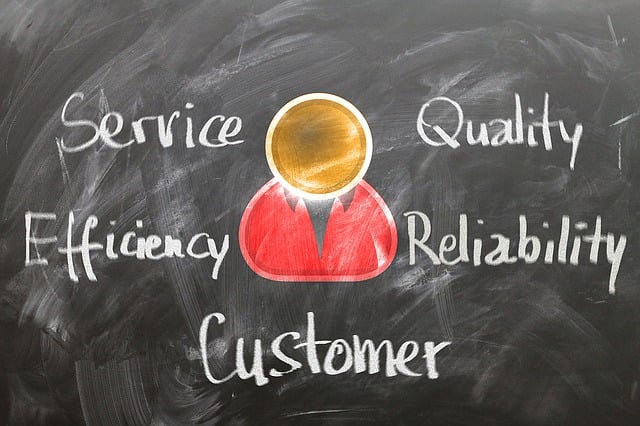Customer Experience Automation : Enhancing Your Business
Customer Experience Automation is revolutionizing how businesses interact with their clients. This comprehensive guide explores the concept, benefits, implementation strategies, challenges, and future trends of Customer Experience Automation, providing valuable insights for businesses looking to enhance their customer service capabilities.
1. Understanding Customer Experience Automation
What is Customer Experience Automation?
Customer Experience Automation (CXA) refers to the use of technology to streamline and enhance customer interactions across various touchpoints. It involves leveraging artificial intelligence, machine learning, and other advanced technologies to automate repetitive tasks and provide personalized experiences at scale.
CXA encompasses a wide range of tools and processes designed to improve customer satisfaction and loyalty while simultaneously reducing operational costs for businesses. From chatbots handling initial customer inquiries to automated email campaigns tailored to individual preferences, CX Automation is transforming the way companies engage with their clientele.
The Importance of Customer Experience in Modern Business
In today’s hyper-competitive market, customer experience has become a key differentiator for businesses across industries. Studies show that customers are willing to pay more for better experiences, and positive experiences can significantly boost customer loyalty and advocacy.
Customer Experience Automation plays a crucial role in meeting these heightened expectations. By providing quick, efficient, and personalized interactions, businesses can create memorable experiences that keep customers coming back. Moreover, in an era where customers expect 24/7 availability, CXA enables companies to maintain constant engagement without straining resources.
Key Components of CX Automation
The core elements of Customer Experience Automation include:
- Chatbots and Virtual Assistants: These AI-powered tools handle customer queries, provide information, and even process simple transactions.
- Automated Email Marketing: Personalized email campaigns triggered by specific customer actions or milestones.
- Self-Service Portals: Online platforms where customers can find information, make purchases, or resolve issues independently.
- Customer Data Platforms: Systems that collect and analyze customer data to provide insights and enable personalized experiences.
- Automated Feedback Collection: Tools that automatically gather and process customer feedback to improve services.
By integrating these components, businesses can create a comprehensive CX Automation system that addresses various aspects of the customer journey.

2. Benefits of Customer Experience Automation
Improved Customer Satisfaction
CX Automation significantly enhances customer satisfaction by providing:
- Instant Responses: Automated systems can handle inquiries 24/7, reducing wait times and frustration.
- Consistency: Automated responses ensure a uniform quality of interaction across all touchpoints.
- Personalization: By leveraging customer data, CXA can offer tailored recommendations and solutions.
These factors contribute to a smoother, more enjoyable customer journey, leading to higher satisfaction rates and increased loyalty.
Increased Efficiency and Cost Savings
Implementing Customer Experience Automation can lead to substantial operational improvements:
- Reduced Workload: Automation handles routine tasks, allowing human agents to focus on complex issues.
- Lower Operational Costs: By automating repetitive processes, businesses can reduce staffing needs and associated costs.
- Faster Resolution Times: Automated systems can quickly address common issues, improving overall efficiency.
These efficiency gains translate into significant cost savings for businesses while simultaneously improving service quality.
Enhanced Data Collection and Analysis
CX Automation systems are powerful tools for gathering and analyzing customer data:
- Comprehensive Insights: Automated systems can collect data from multiple touchpoints, providing a 360-degree view of the customer.
- Real-Time Analytics: CXA tools often include analytics capabilities, offering up-to-date insights into customer behavior and preferences.
- Predictive Modeling: Advanced CXA systems can use historical data to predict future customer needs and trends.
This wealth of data enables businesses to make informed decisions and continuously improve their customer experience strategies.
3. Implementing Customer Experience Automation in Your Business
Identifying Areas for Automation
To successfully implement Customer Experience Automation, businesses should:
- Analyze Current Processes: Identify repetitive tasks and common customer pain points that could benefit from automation.
- Assess Customer Preferences: Understand how your customers prefer to interact and which channels they use most frequently.
- Evaluate Potential Impact: Prioritize automation initiatives based on their potential to improve customer satisfaction and operational efficiency.
By carefully selecting areas for automation, businesses can maximize the benefits of CXA while minimizing disruption to existing processes.
Choosing the Right Tools and Technologies
Selecting appropriate CX Automation tools is crucial for success:
- Assess Your Needs: Consider your specific business requirements, customer base, and existing technology stack.
- Evaluate Integration Capabilities: Ensure the chosen tools can seamlessly integrate with your current systems.
- Consider Scalability: Select solutions that can grow with your business and adapt to changing customer needs.
Investing in versatile, scalable CXA solutions will provide long-term value and adaptability for your business.
Best Practices for a Successful Implementation
To ensure a smooth transition to Customer Experience Automation:
- Start Small: Begin with pilot projects to test and refine your approach before full-scale implementation.
- Train Your Team: Ensure your staff understands how to work alongside automated systems effectively.
- Monitor and Adjust: Continuously track the performance of your CXA initiatives and make adjustments as needed.
- Maintain a Human Touch: Use automation to enhance, not replace, human interactions in customer service.
Following these best practices will help maximize the benefits of CX Automation while minimizing potential disruptions.
4. Overcoming Challenges in Customer Experience Automation
Common Obstacles and How to Address Them
Implementing Customer Experience Automation can present several challenges:
- Resistance to Change: Address this by clearly communicating the benefits of CXA to all stakeholders.
- Technical Complexity: Invest in proper training and support to ensure smooth adoption.
- Data Privacy Concerns: Implement robust security measures and be transparent about data usage.
By proactively addressing these challenges, businesses can ensure a smoother transition to automated customer experience systems.
Ensuring Seamless Integration with Existing Systems
To maximize the effectiveness of Customer Experience Automation:
- Conduct a Thorough System Audit: Understand your current technology landscape before implementing new solutions.
- Choose Compatible Solutions: Opt for CXA tools that can easily integrate with your existing systems.
- Plan for Data Migration: Ensure smooth transfer of customer data to new automated systems.
Seamless integration is key to realizing the full potential of CX Automation.
Maintaining a Personal Touch in Automated Interactions
While automation brings efficiency, it’s crucial to maintain personalization:
- Use Customer Data Wisely: Leverage collected information to personalize automated interactions.
- Implement Hybrid Models: Combine automated systems with human agents for complex or sensitive issues.
- Regularly Update Your Content: Keep your automated responses fresh and relevant to maintain a personal feel.
By striking the right balance, businesses can enjoy the benefits of automation without sacrificing the human element of customer service.
5. Future Trends in CX Automation
Emerging Technologies to Watch
The future of Customer Experience Automation is shaped by exciting technological advancements:
- Voice-Activated Assistants: Expect more sophisticated voice-based CXA solutions.
- Augmented Reality (AR): AR could revolutionize how customers interact with products and receive support.
- Blockchain: This technology could enhance security and transparency in customer interactions.
Staying informed about these emerging technologies will help businesses remain at the forefront of Customer Experience Automation.
The Impact of AI and Machine Learning
Artificial Intelligence and Machine Learning will continue to drive CXA innovation:
- More Sophisticated Chatbots: AI will enable chatbots to handle increasingly complex customer inquiries.
- Predictive Customer Service: ML algorithms will anticipate customer needs before they arise.
- Emotional Intelligence: AI systems will better understand and respond to customer emotions.
These advancements will further enhance the capabilities of Customer Experience Automation, leading to even more personalized and efficient customer interactions.
Preparing Your Business for the Future of CX Automation
To stay ahead in the evolving landscape of CXA:
- Stay Informed: Keep up with the latest trends and technologies in Customer Experience Automation.
- Invest in Flexible Systems: Choose CXA solutions that can adapt to future technological advancements.
- Prioritize Continuous Learning: Foster a culture of ongoing education and adaptation within your organization.
By embracing innovation and maintaining flexibility, businesses can position themselves to leverage the full potential of future Customer Experience Automation technologies.
In conclusion, CX Automation is not just a trend but a fundamental shift in how businesses interact with their customers. By understanding its components, benefits, implementation strategies, and future trends, companies can harness the power of CXA to enhance customer satisfaction, improve operational efficiency, and gain a competitive edge in the market. As technology continues to evolve, those who successfully integrate Customer Experience Automation into their business strategies will be well-positioned to thrive in the customer-centric future of commerce.
More about marketing:
Marketing Strategy: Capitalizing on Growth Opportunities, click here
B2B Secrets: Effective Techniques for Inter-Business Marketing, click here
How to: Build a Long Lasting Relationship with your Customers, click here
From Traditional to Modern Sales, click here


